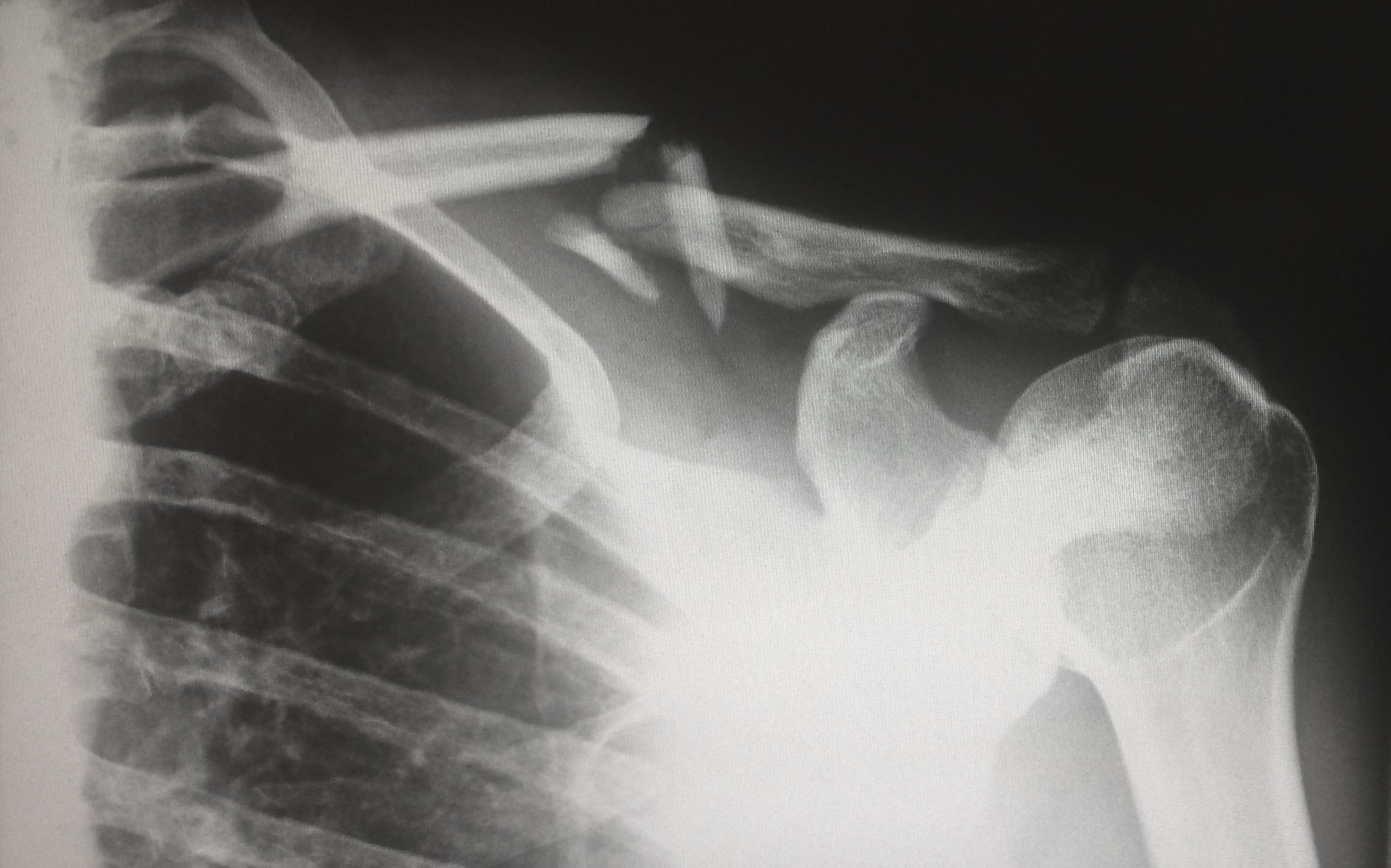Clavicle Fractures.
The clavicle (collarbone) is a slender S-shaped bone that connects the sternum (breastbone) to the scapula (shoulder blade). The clavicle acts as a strut to help keep the shoulder in the correct position, it also helps protect a very important bundle of nerves and blood vessels that sit just behind it. Any severe force on the shoulder, such as falling onto the shoulder or falling on an outstretched arm, transfers force directly to the clavicle. As a result, the collarbone is one of the most commonly broken bones in the body.
How is a clavicle fracture diagnosed?
Following a clavicle fracture, symptoms such as pain, difficulty lifting the arm, drooped shoulder, bruising, swelling and a bump or deformities at the site of the fracture are all common. The majority of patients attend A&E straight away where the fracture is diagnosed.
X-rays can be obtained on the day of your consultation and will demonstrate the fracture pattern and the amount of displacement of the bone fragments. At a later stage of the injury, x-rays are very useful for monitoring fracture healing.
CT scans are not usually required unless there is a suspicion of injuries to the underlying nerves and bloods vessels or if the pattern of injury is very complicated.
MRI scan are not usually required unless there is a suspicion of injuries to other structures of the shoulder.
Treatment options
Mr Moverley will tailor your treatment specifically to which part of the bone is broken and the displacement of the fragments, whilst taking into account your expectations and medical history.
Non-operative Management
Unless the overlying skin of the clavicle is damaged during the injury it is usually possible to manage any clavicle fracture without surgery. If the fracture is undisplaced (the two broken pieces are still touching) then non-operative treatment is highly recommended.
Possible non-operative options include:
A Sling to support the injured shoulder and prevent movement at the fracture site, this may be needed for up to 6-8 weeks. A sling also provides excellent pain relief in the early stages after the injury. As pain decreases with time it is a good sign that the broken bone is starting to heal, at this stage the sling can be used less.
Putting an ice pack on the injured area for 15-20 minutes may help reduce swelling, bruising, and pain.
Simple pain killers may help reduce pain and swelling.
Limiting certain activities such as lifting or driving, or movements such as reaching and pulling until the bone has healed.
A focused physiotherapy program to stretch the soft tissues around the shoulder and to strengthen the muscles will help improve strength, flexibility, and range of motion in the injured arm and shoulder. This is usually commenced when the pain from the initial injury is starting at improve.
Smoking greatly reduces the likelihood of your collarbone healing.
If you do smoke you should try and quit immediately. https://www.livewelldorset.co.uk/stop-smoking/
What are the success rates of non-operative treatment of clavicle fractures?
If your clavicle is broken in the middle of the bone and the ends are displaced there is approximately 85% chance that the bone will have healed after 3 months.
If your clavicle is broken in the lateral end (near to the shoulder) of the bone and the ends are displaced there is approximately 70% chance that the bone will have healed after 3 months.
If the bone fails to heal after 3-6 months and you still have symptoms then surgery to fix the bone can be attempted and the results are usually good.
Even though your bone may ‘heal’ following non-operative treatment the shoulder can still appear abnormal due to residual deformity in the bone. The shoulder may appear drooped forward and very occasionally patients complain of weakness around the shoulder. For some patients the risk of this occurring is unacceptable and they may wish to consider early surgery to fix the clavicle fracture.
Surgical Management
Surgery for displaced clavicle fractures increases the healing rates to over 95%. However as surgery carries a small risk of complications, a careful discussion with Mr Moverley is required before deciding whether this is the correct option for you.
Surgery is generally considered in the following situations:
When the gap between the bones is very large.
The fracture is in more than 2 pieces.
High energy injuries.
Young/high demand patients.
Threatened skin over the site of the fracture.

